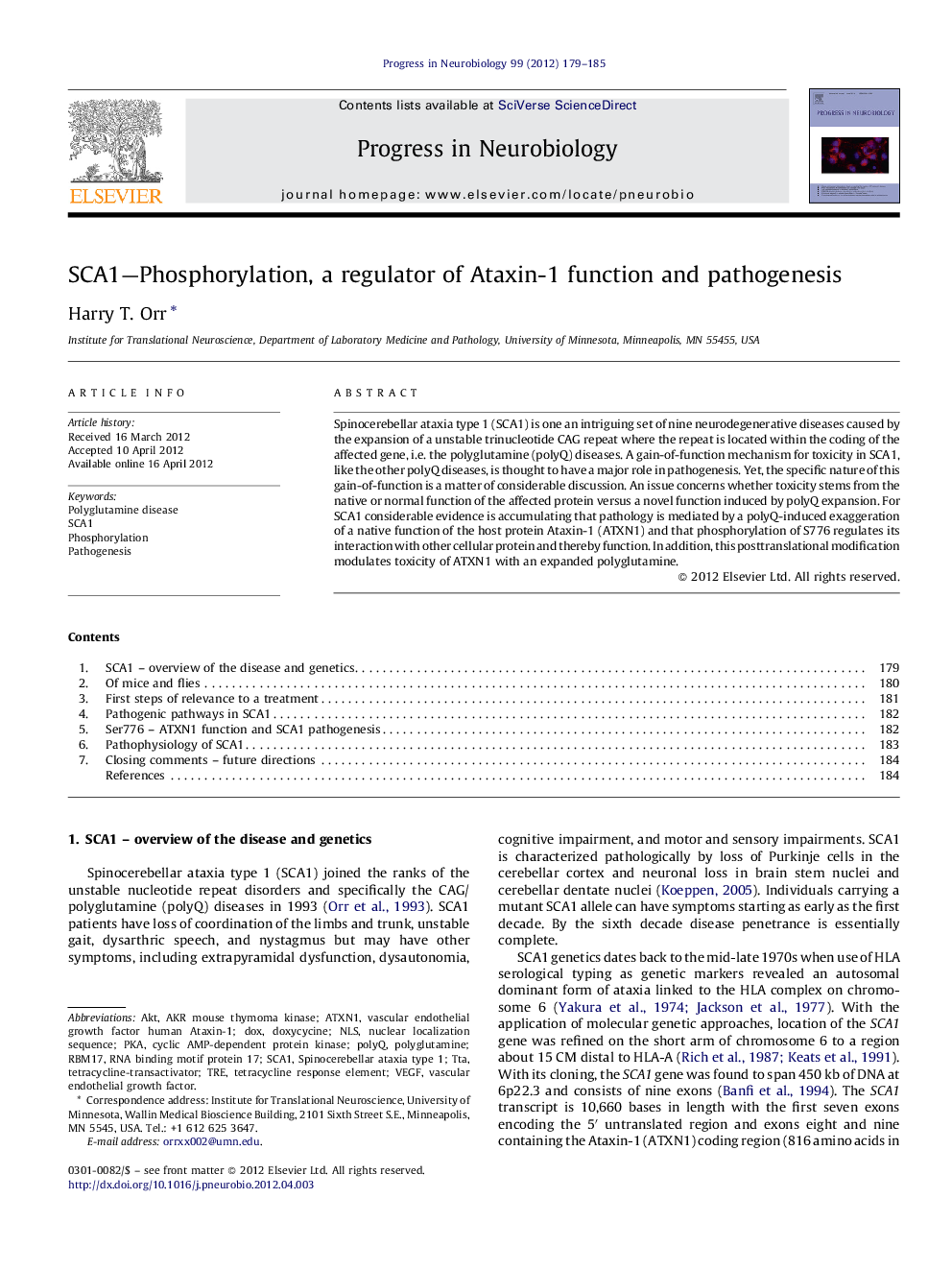| Article ID | Journal | Published Year | Pages | File Type |
|---|---|---|---|---|
| 4353399 | Progress in Neurobiology | 2012 | 7 Pages |
Spinocerebellar ataxia type 1 (SCA1) is one an intriguing set of nine neurodegenerative diseases caused by the expansion of a unstable trinucleotide CAG repeat where the repeat is located within the coding of the affected gene, i.e. the polyglutamine (polyQ) diseases. A gain-of-function mechanism for toxicity in SCA1, like the other polyQ diseases, is thought to have a major role in pathogenesis. Yet, the specific nature of this gain-of-function is a matter of considerable discussion. An issue concerns whether toxicity stems from the native or normal function of the affected protein versus a novel function induced by polyQ expansion. For SCA1 considerable evidence is accumulating that pathology is mediated by a polyQ-induced exaggeration of a native function of the host protein Ataxin-1 (ATXN1) and that phosphorylation of S776 regulates its interaction with other cellular protein and thereby function. In addition, this posttranslational modification modulates toxicity of ATXN1 with an expanded polyglutamine.
► An overview of the pathogenesis of the polyglutamine neurodegenerative disease spinocerebellar ataxia type 1 (SCA1). ► A study of all the molecular pathways that impact SCA1 pathogenesis. ► A discussion of the two major pathways that contribute to SCA1, transcriptional regulation mediated by Ataxin-1/Capicua and what is likely RNA processing involving Ataxin-1/RBM17. ► A review of the importance of Ser 776 phosphorylation in regulation of Ataxin-1 biology and SCA1 pathogenesis. ► An opinion is promoted, which encourages the identification and characterization of multiple potential therapeutic targets.
